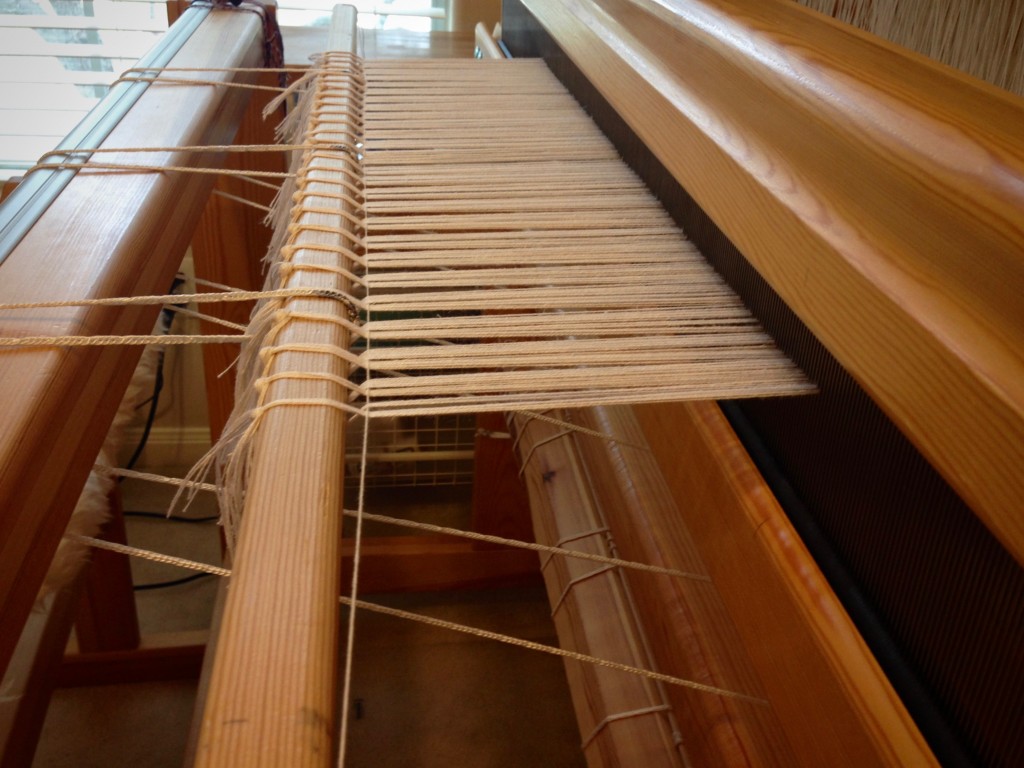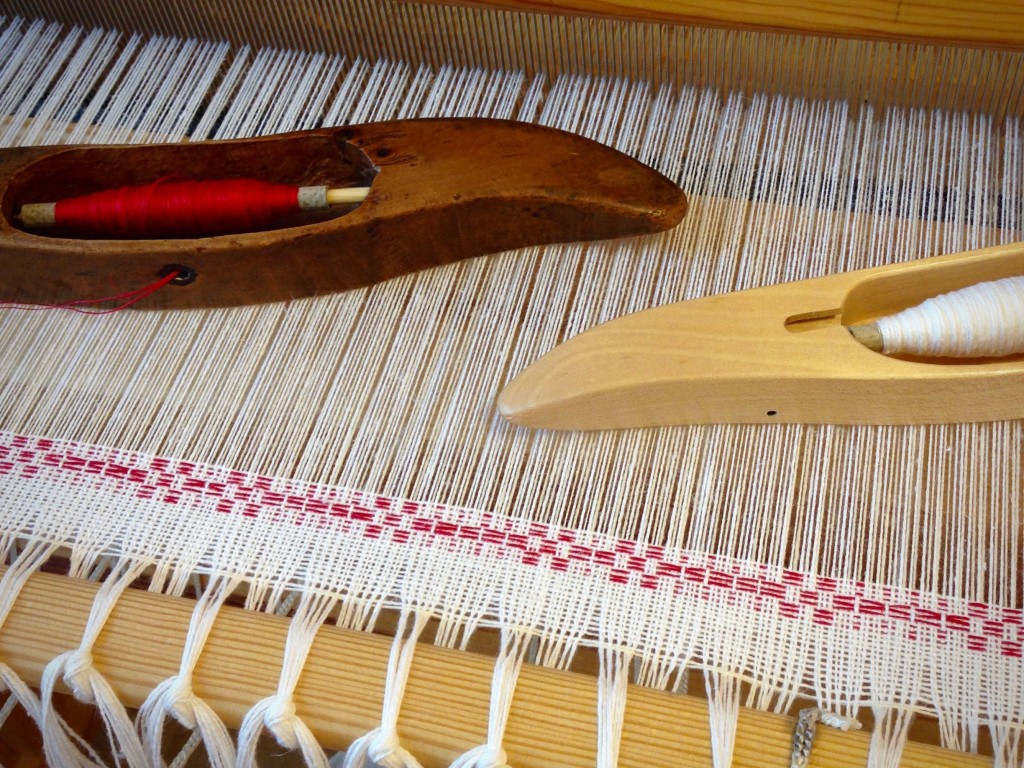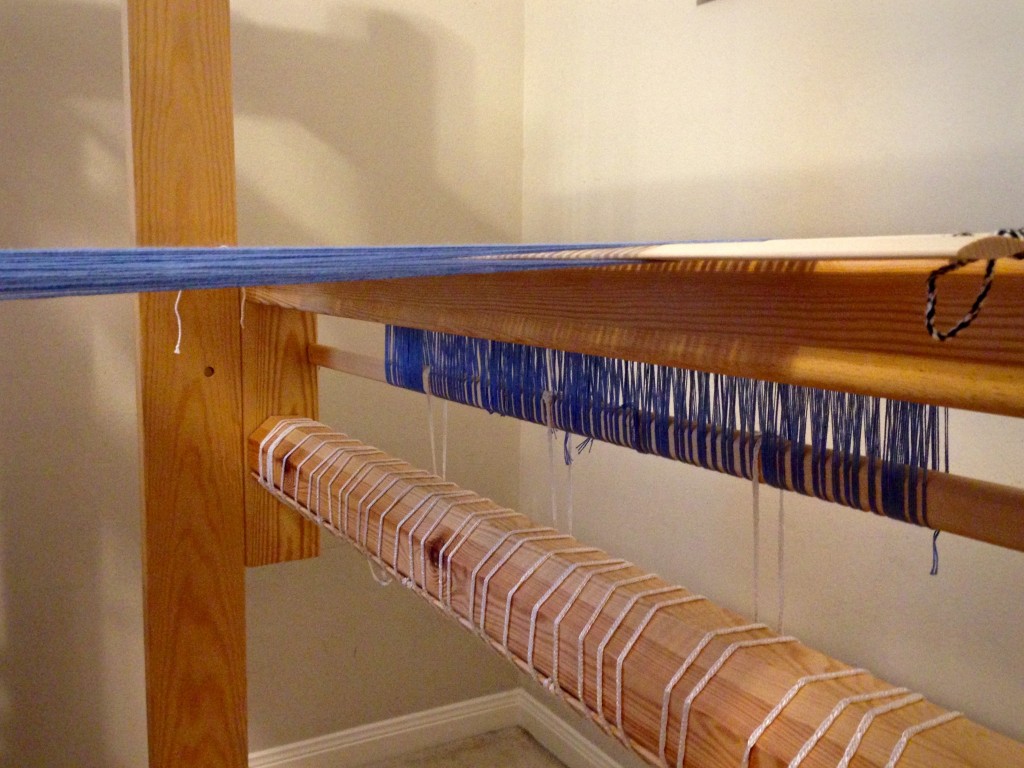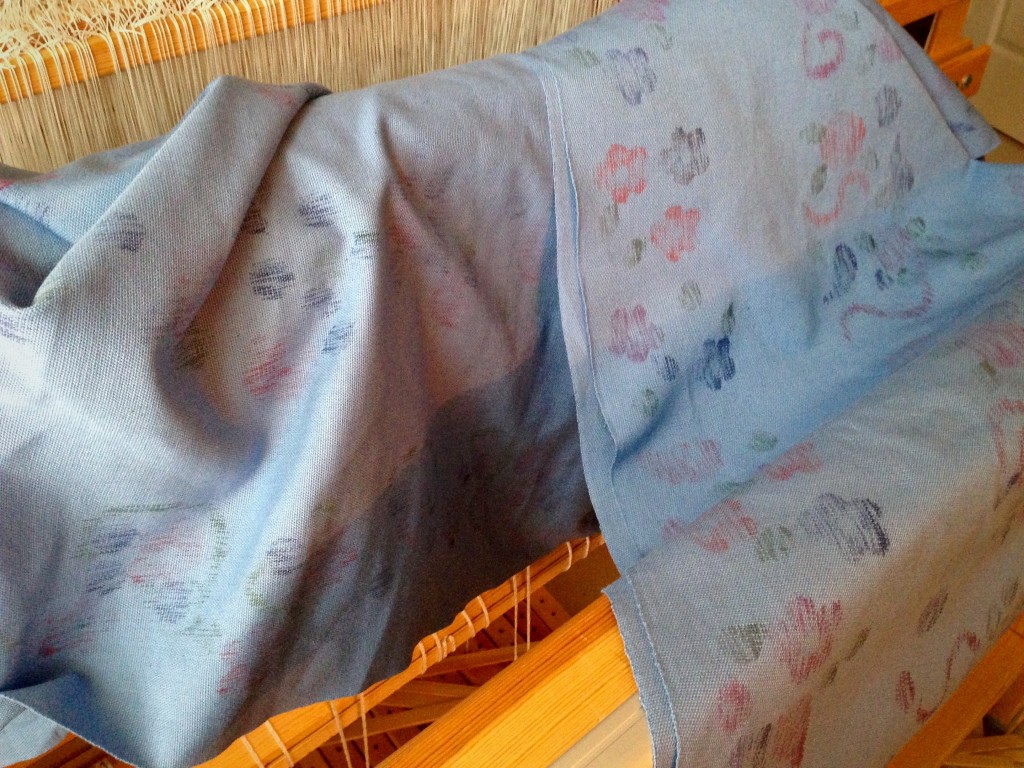The length of woven cloth unrolls and unrolls until you get all the way back to the front tie-on bar. The towels are 70% linen. Oh, how I wish you could touch this fabric! You would feel the crispness of a linen tea towel, with a little bit of cotton softness.

It all comes back to the front tie-on bar. This is where the weaving begins. The warp ends must be secure at the beginning. No one wants the tie-on knots to slip as the woven fabric rounds the cloth beam. You want warp ends to be securely fastened, with no chance of losing their grip. Your cloth depends on it.
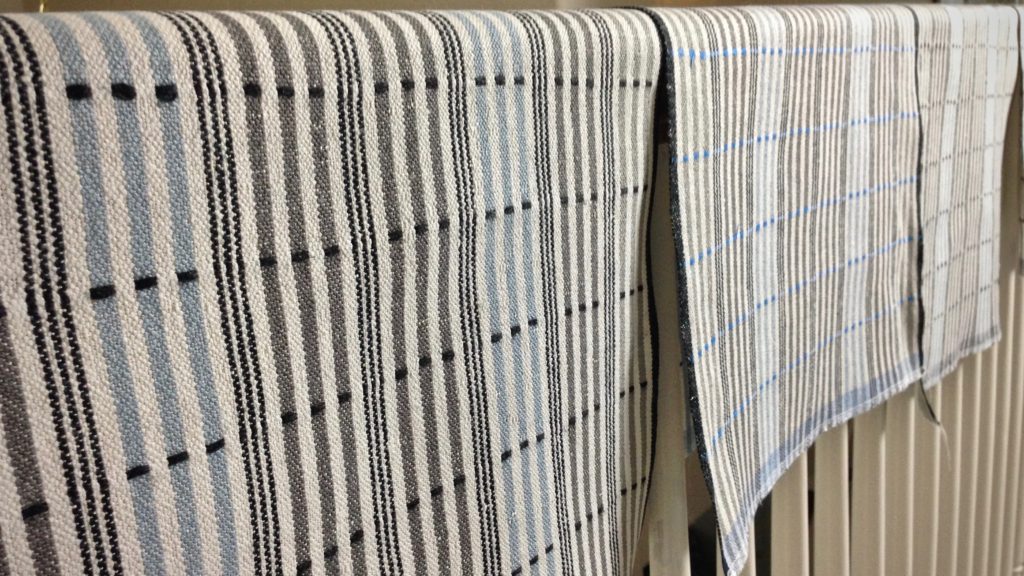
Think of yourself gripping onto hope. Think of the knots that hold tightly to the front tie-on bar. Hold tightly to hope, and don’t let go while the weaving progresses. Our hope is not some vague wish. Our hope is based on the redeeming work of Jesus Christ–God’s promise to be with us. God can be trusted to keep his promise. Don’t waver in your tight grip on this true hope. The fabric of your life depends on it.
May you be known for hope.
Hopeful,
Karen




